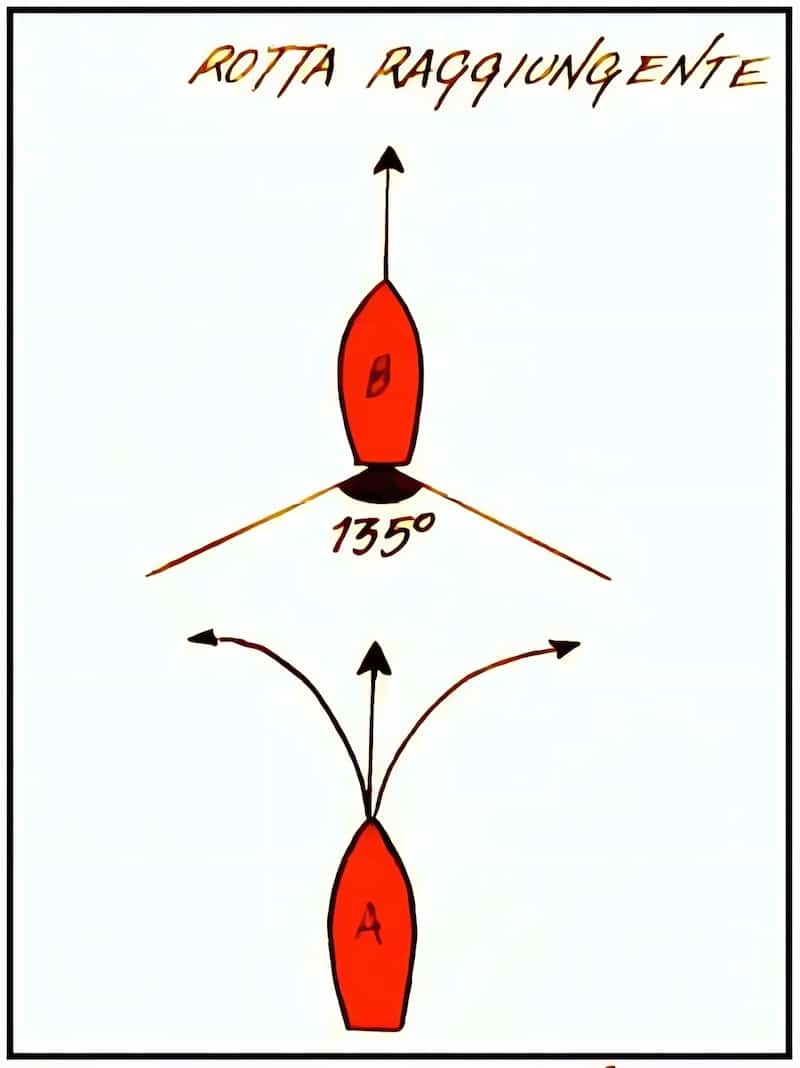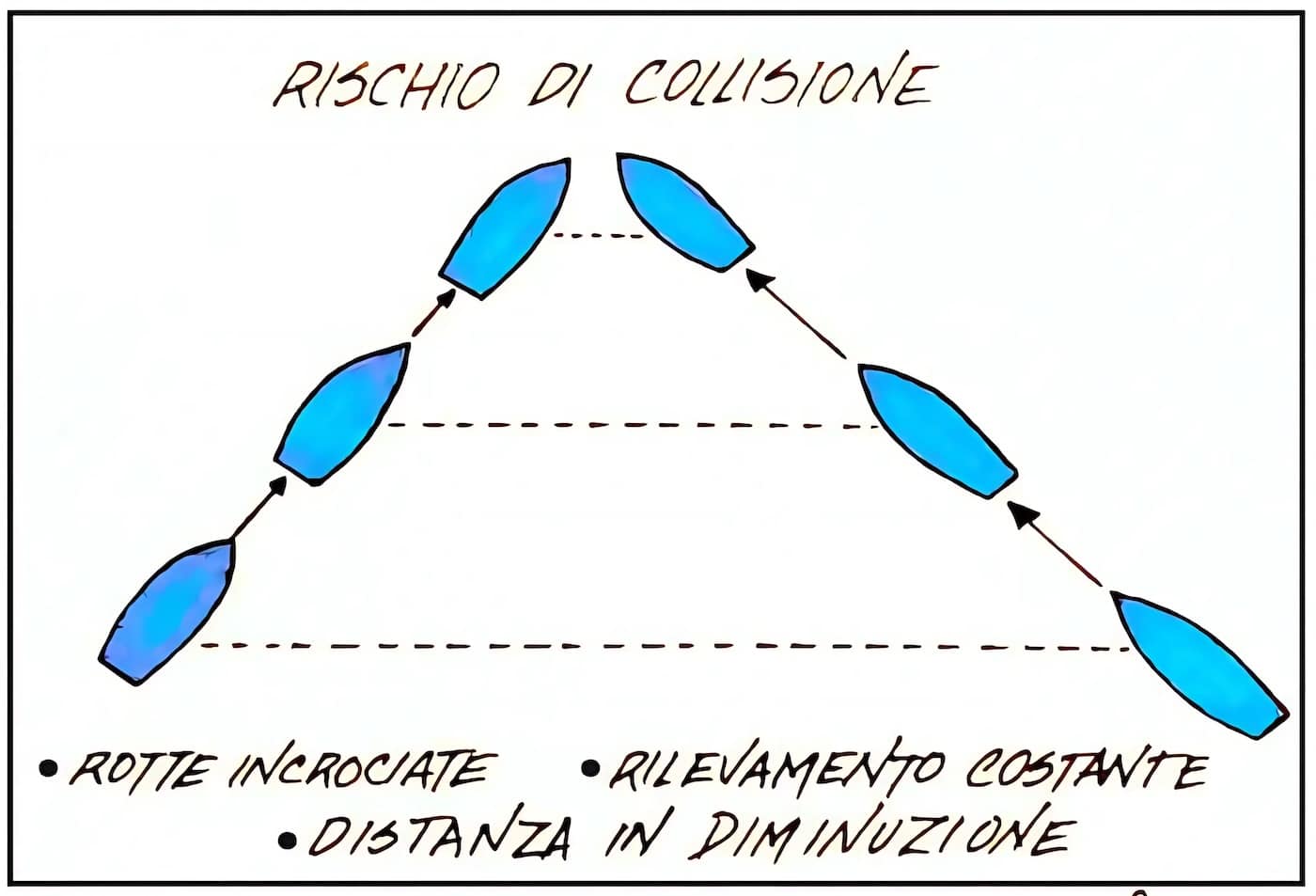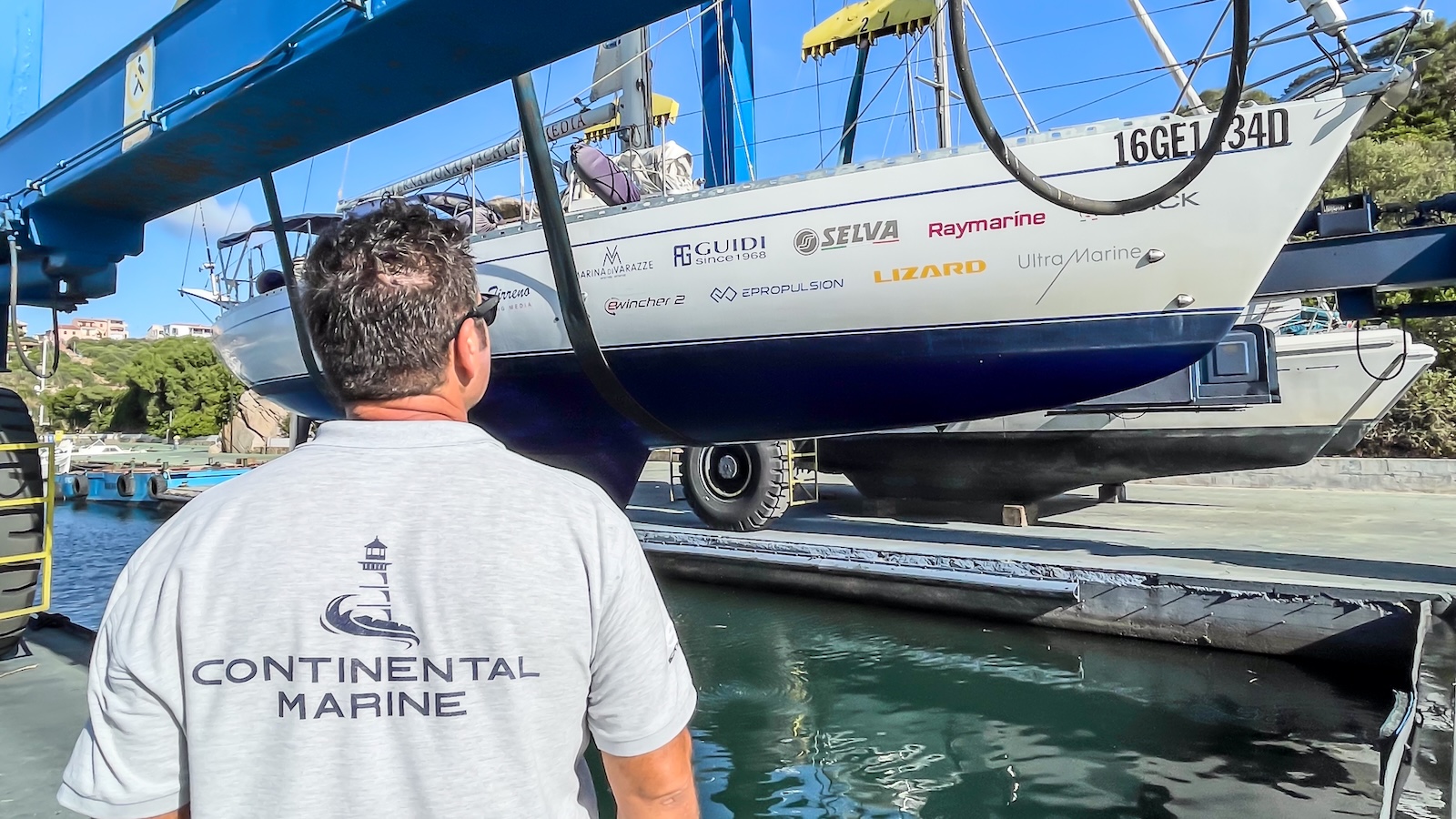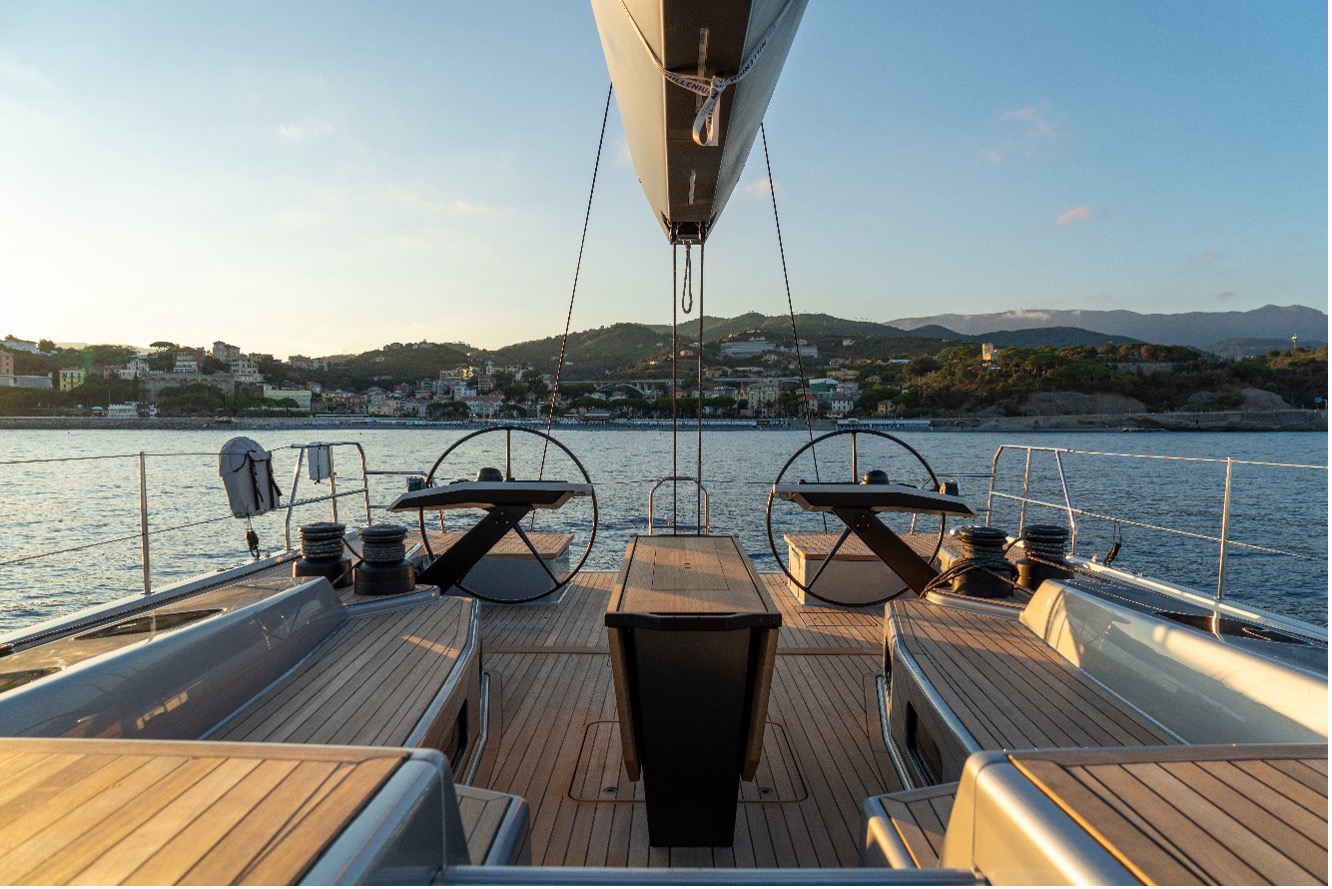“Who has the right of way?” the elderly sailor seems to wonder. It’s an interesting question, but perhaps not the best time to ask it. For this reason, even though the topic of right of way at sea becomes especially relevant in August, when waters are crowded with recreational boaters, it seems appropriate to tackle this subject now—to refresh some knowledge (and maybe a bit of common sense).
First, let’s understand how to determine if we are on a collision course with another boat.
The rule is disarmingly simple: If the distance between two vessels decreases and the bearing remains unchanged, it’s only a matter of time—you’re on a collision course. At this point, who must maneuver to avoid the so-called “collision at sea”? It depends.
Between a sailboat and a motorboat, the former always has the right of way. According to regulations, a sailboat takes precedence over any mechanically propelled vessel. However, a sailboat must yield in specific situations: when the motorboat has limited maneuverability, is constrained by its draft (e.g., failing to yield would run it aground), is engaged in fishing operations, or is not under command. This rule applies only if the sailboat is navigating solely under sail. If the motor is in use, different rules come into play.
Does this mean that a 7-meter sailboat crossing paths with a 15,000-ton oil tanker always has the right of way? Theoretically, yes. But this is where common sense must prevail—quickly grabbing the helm and sheets to change course. Large ships, ferries, and cargo vessels have far less maneuverability than a recreational sailboat. Insisting on your right of way in such cases would be not only foolish but extremely dangerous.
Now let’s consider two sailboats crossing paths. The right of way always belongs to the boat on a starboard tack—meaning the wind is hitting its right-hand side. If both boats are on the same tack, the leeward boat has the right of way.
And what about motorboats? Here too, it depends on the situation. In the case of a crossing, the boat that sees the other approaching from its starboard side must maneuver, typically turning to starboard and slowing down. If the two boats are on opposite courses, both should simply turn to starboard.

With these basic rules refreshed, let’s remember that every skipper has a duty to avoid collisions at sea (not to be confused with pirate “boardings,” but actual accidents).
Always keep a competent watch in the cockpit or on the bridge, follow the rules rigorously, and exercise prudence and common sense.



























3 Responses
It’s a bit surprising to see a boating magazine use the phrase “right of way” (outside the specialized confines of sail racing), and not quickly and thoroughly explain what is wrong with the phrase.
“Right of Way” is not a helpful phrase. Clearer terms are “stand on vessel” and “give way vessel”. This post/article also perpetuates the unfortunate and prideful misunderstanding that somehow sailboats “always have the right of way” even over commercial vessels restricted by draft, maneuverability, and/or work in which they may be engaged (fishing, dredging, etc.). I am a sailor. So I am sharing this with you as someone who shares your recreational passion (commercial Captains will not be so friendly): Get out of the way of larger, working vessels. It’s the law.
I shared your post as I liked it and understood it well. But I’ve been told on the cruising and sailing Scotland site that it’s rubbish and lies and no boat has ever got right of way. I’m familiar with some of the RYA right of way racing rules and i agree that there is right of way rules. Just like the road kinda speak.. these guys are speaking about collision at sea regs. But I thought if everyone knew the right of way rules then there would be no collision at sea. I understand if u have right of way and you have an idiot who don’t no the rules yes you should avoid the collision..it common sense. Can you help me out here is ther right of way rules?